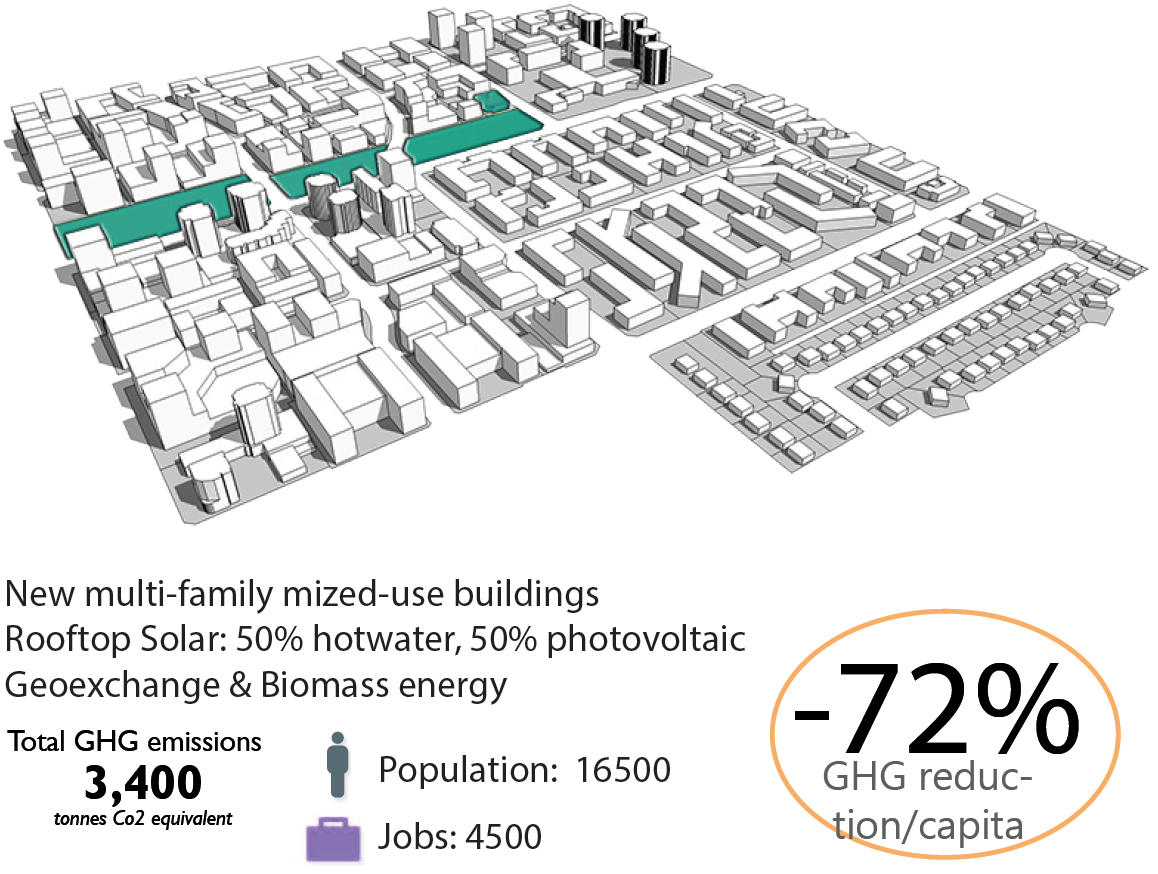REDEVELOPING A MALL
Energy options for large scale site redevelopment
Image of Landsdowne Mall, Richmond, BC
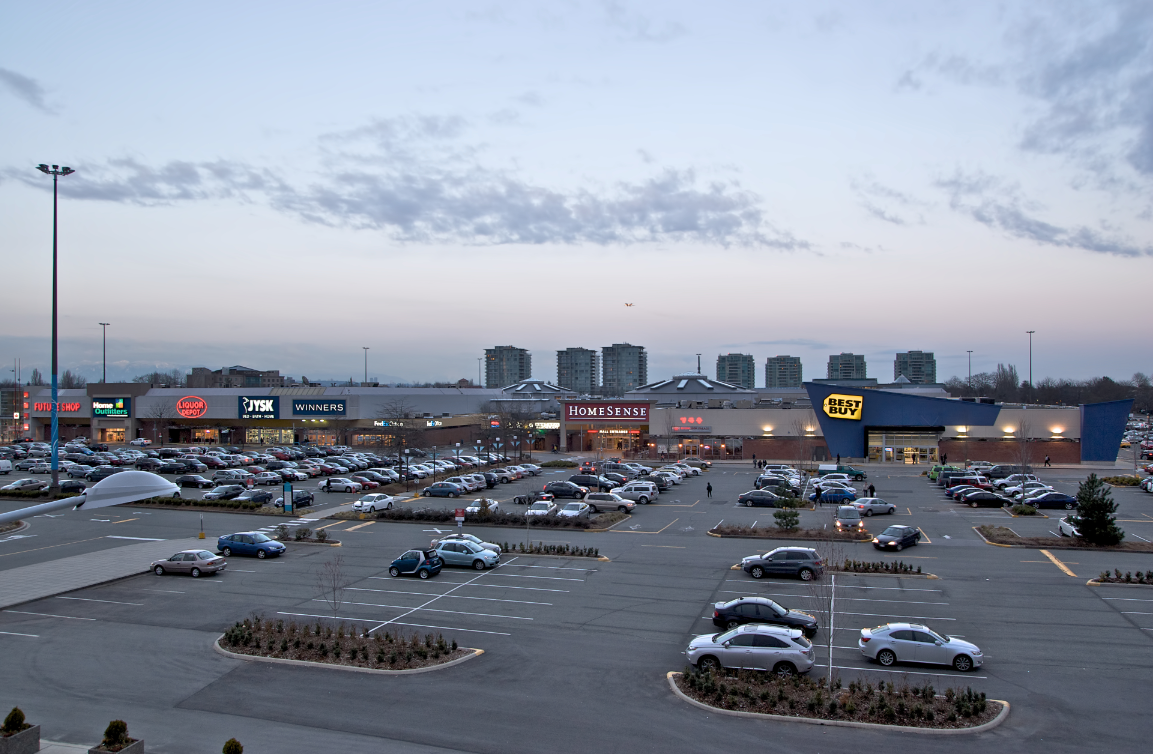

The City of Richmond is hoping to make its communities more efficient. They wanted to explore the potential of infiling an existing mall to see how it could perform. In its current condition, the residential density of the area is relatively low compared to other urban areas in Richmond. The buildings tend to have poor insulation and inefficient furnaces and windows. The current residential energy use of the area is about 165,000 GWh per year. About 65% of this energy is supplied by natural gas and the remainder supplied by electricity.
EXPLORING ALTERNATIVES
Three scenarios were examined to explore opportunities for developing a more sustainable neighbourhood. Each scenario builds upon the previous and integrates energy technologies that can already be found in use across Metro Vancouver.
Scenarios:
- Current Best Practice: Increased Density and Current Building Code
- Building-level renewables
- Shared Energy
Existing Conditions:
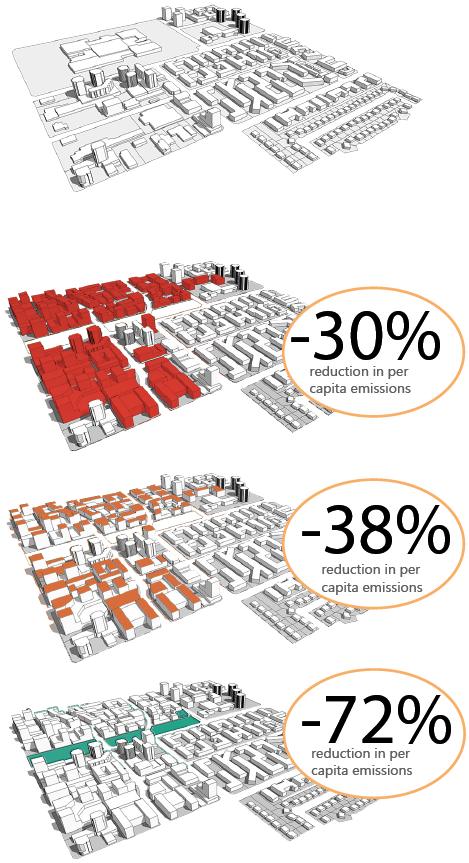
Current Best Practice: Increased Density and Building Code
In this scenario, the neighbourhood develops to become compact and complete, with extensive mid-rise mixed-use buildings complemented by a new large park. This development follows the City’s official community plan, and all buildings are built to the current building code. More jobs locate within the neighbourhood and it is more walkable for residents. All of these changes greatly reduce per capita greenhouse gas emissions.
Existing Condition:
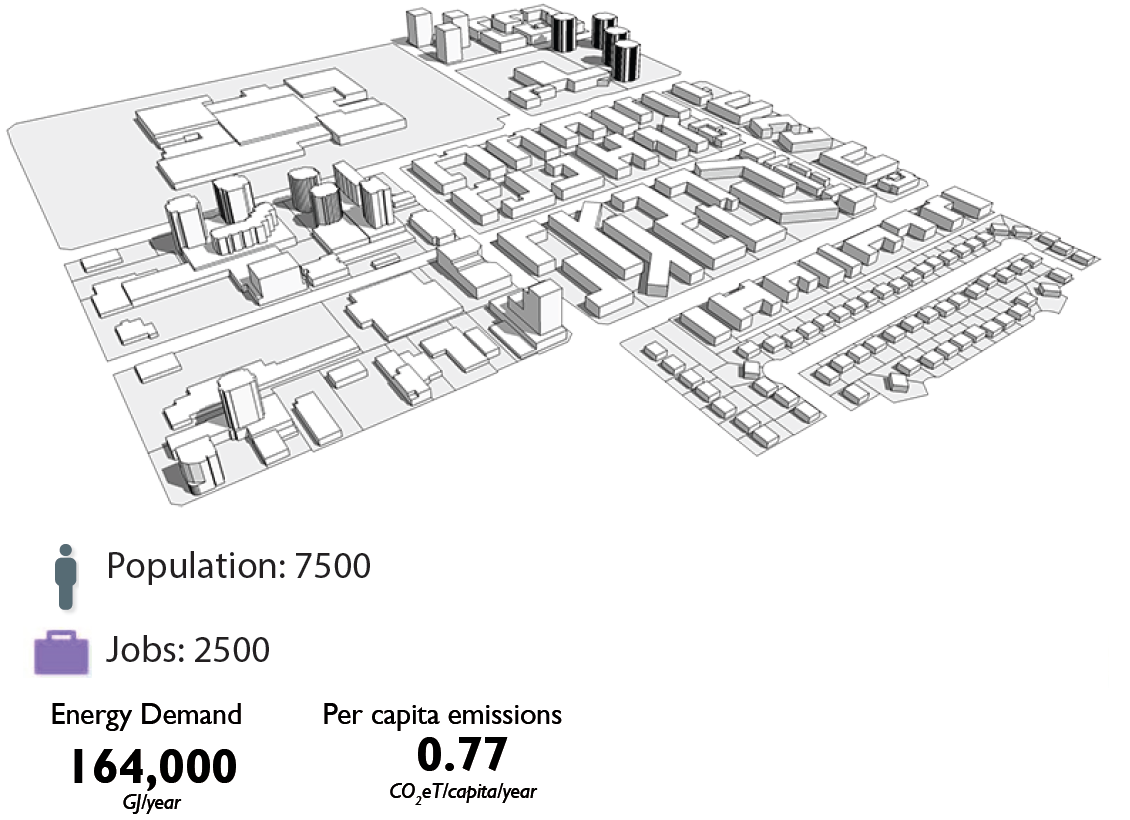
Increased Density and New Building Code:
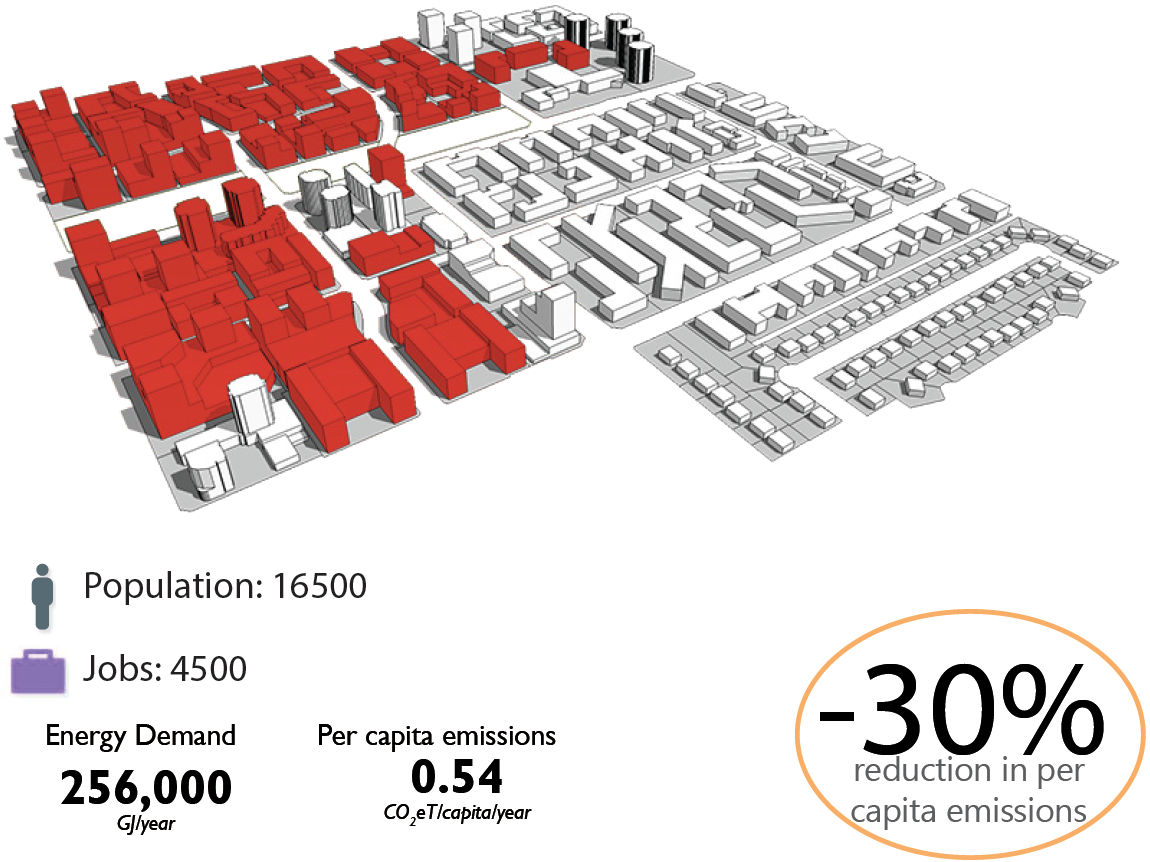
Building Level Renewables
Solar panels can be integrated with the design of new buildings to reduce visual impact from ground-level and minimize shading from nearby buildings. Using solar energy further reduces per capita emissions.
Density and Buildings
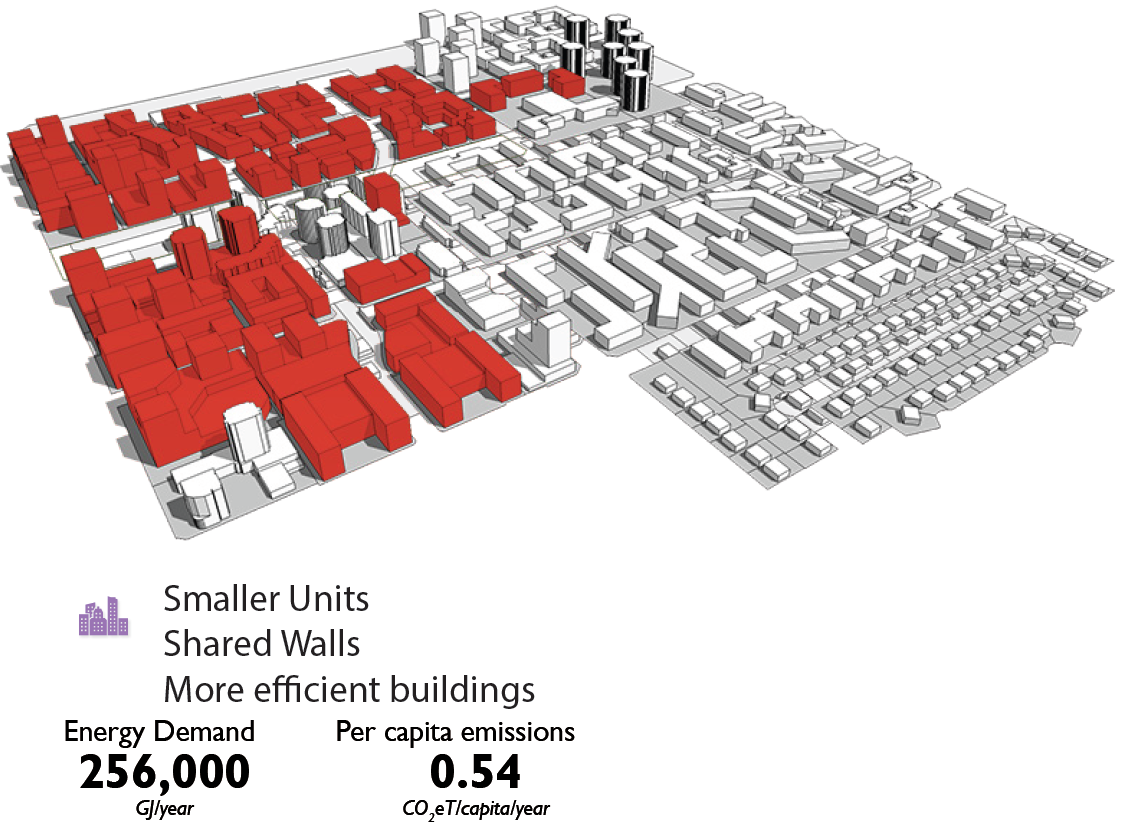
Building Level Renewables:
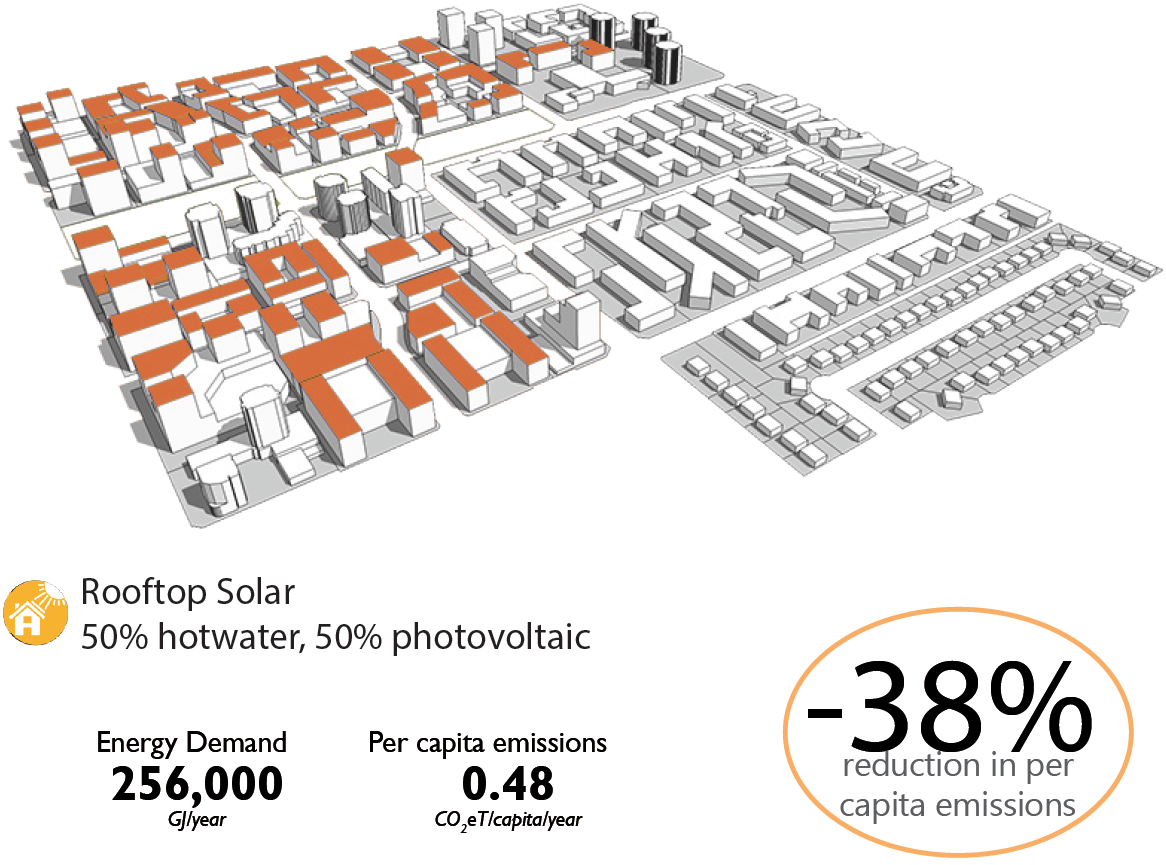
Shared Energy options
Geoexchange is located underground and out of sight in the linear park. A bioenergy plant is located within the community on a major street for access and can be integrated with surrounding building design. This scenario greatly reduces per capita and total carbon emissions.
Building Level Renewables:

Shared Energy:
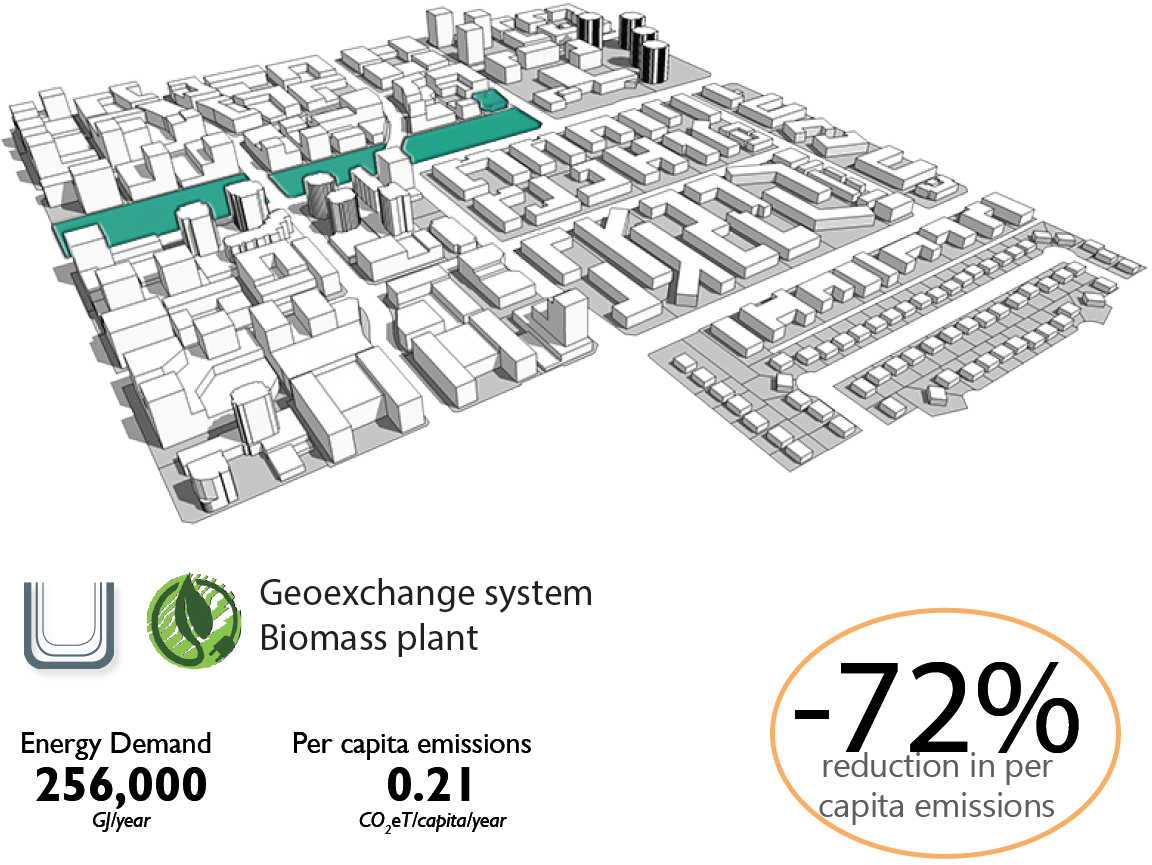
Low density and energy inefficient buildings are developed to a low carbon community
The final scenario shows the total possible building emissions reductions when all three scenarios are combined. Though the Redeveloping a Mall scenario did not specifically explore transportation energy, locating dense buildings near a rapid transit station would likely reduce per-captia greenhouse gas emissions from transportation as more residents could choose rapid transit for work or personal travel.
Building Level Renewables:
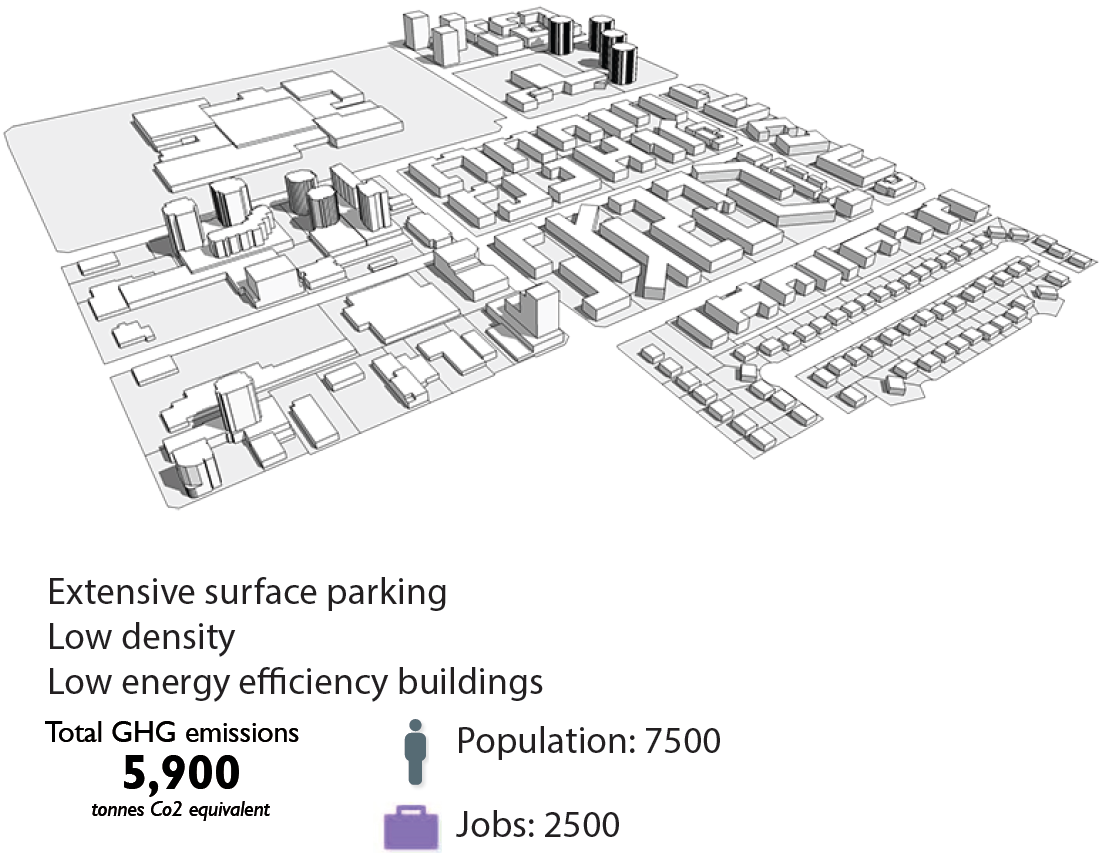
Shared Energy:
